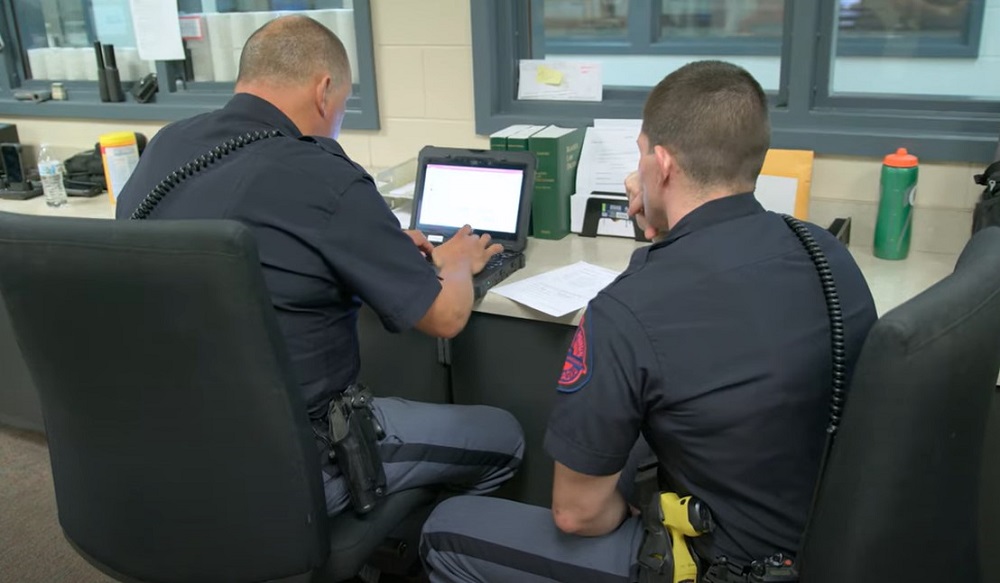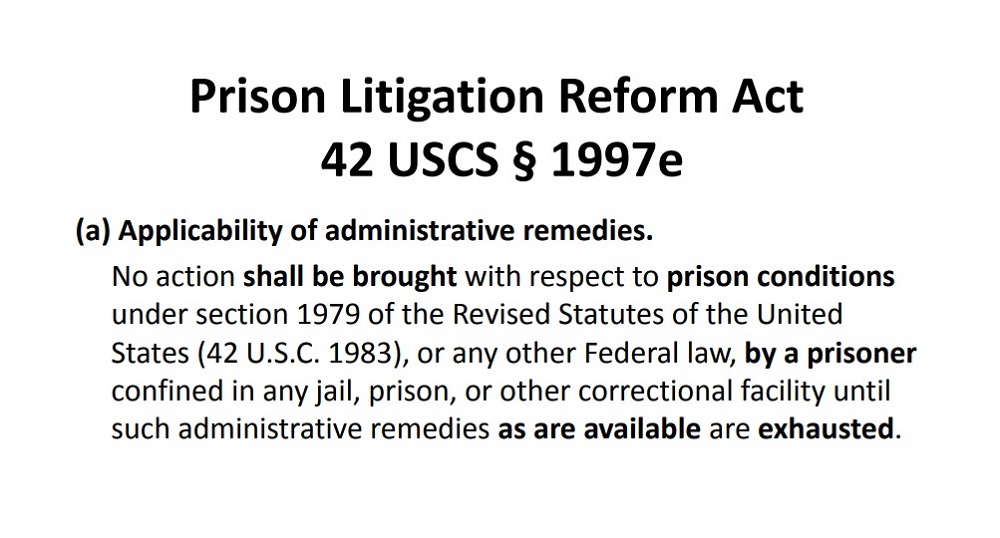Can Grievances Work in My Favor?
If you've worked in a correctional facility, you're no stranger to the complexities of handling grievances. Whether it’s an inmate alleging they missed a meal or asserting they didn’t receive necessary medical care, each complaint requires careful attention. Understanding how to navigate these situations is crucial, regardless of whether you’ve served as a grievance officer or have faced unwarranted accusations.
In this blog, we'll explore the grievance process in detail, outlining how to effectively manage and address inmate complaints. We'll also highlight how a well-managed grievance system can serve as a valuable asset for your facility’s risk management team.
What’s the Difference Between a Formal and Informal Grievance?
A grievance, by definition, is a formal complaint. So, when an inmate files a grievance, they are essentially raising a complaint that must be addressed. Regardless of whether the grievance is valid or not, the law mandates that correctional facilities provide inmates with a formal grievance process. While inmates’ rights are significantly diminished while imprisoned, they still have the right to request that issues they face be resolved by facility officials.
Corrections professionals are well aware that inmates will often challenge staff and raise concerns about their conditions of confinement. Initially, these concerns might be expressed informally; for example, an inmate may approach an officer with a problem, and the officer attempts to resolve it on the spot. This informal approach is crucial for immediate issue resolution. However, if the inmate remains dissatisfied with the outcome, they have the option to escalate their complaint by filing a formal grievance.
Before filing a formal grievance, an inmate should first attempt to resolve the issue informally. If an informal resolution does not address the concern, the inmate may proceed with a formal complaint by completing a grievance form. These forms must be easily accessible and should explicitly state that submitting a grievance will not result in reprisals against the inmate. The form is designed to address institutional needs and should include fields for the following information:
Name of the grievant
Date and time of grievance submission
Grievant’s housing location
Description of the issue
Request for resolution
Grievant’s signature
Response from the facility
Signature line for the hearing officer
Date the response was issued
Date the response was delivered
Signature of the appellate authority, if applicable
Ensuring these elements are included helps maintain a clear and organized grievance process (Wallenstein, 1989).
Who Makes the Final Call?
Grievance response timelines can differ significantly between facilities. Some institutions mandate that grievances be filed within 30 days of the incident, while others require submission within just five days. Regardless of the specific timeline, the inmate filing the grievance must be personally interviewed. This interview should be conducted by either a hearing officer or a committee within a reasonable timeframe, typically no longer than one week from the date the grievance was filed (Wallenstein, 1989).
Once the form is filed, the institutional administrator may designate a single employee, generally of middle to senior supervisory rank, as the institutional grievance officer to review and respond to the grievance. This individual will be solely responsible for the review of all grievances, the administration of the procedure, the preparation of all documents, and their distribution. Some facilities utilize a grievance committee, which may be more appropriate in larger institutions where the number of grievances may require several simultaneous reviews or investigations.

Grievance officers must maintain impartiality to ensure that the individual or committee reviewing a grievance has no prior involvement or direct knowledge of the situation (Wallenstein, 1989). Facilities should implement a reasonable policy that adheres to a set timeline, addressing inmate concerns promptly while allowing staff adequate time to provide a well-informed response. The grievance process should include an appeal mechanism, providing an additional avenue for resolution without resorting to the court system.
Once a final decision is reached, the response must be documented in writing and offer clear explanations for both the initial grievance and the final disposition. Inmates have the right to receive a clear explanation of the decision to ensure transparency (Wallenstein, 1989).
How Does this Benefit the Staff and Facility?
Tracking grievances is crucial for maintaining administrative awareness of conditions within the facility. Line staff, shift supervisors, and watch commanders are essential in resolving issues and often serve as the final touchpoint for many concerns. Regularly reviewing grievances allows administrators to gain a comprehensive understanding of the facility’s environment, identify areas needing policy revision, and enhance overall operations. For instance, if the population is becoming agitated over a problem that could be resolved—such as a food vendor failing to meet standards—a review of complaints can guide administrators in focusing their efforts on inspecting and addressing the issue.
A well-implemented grievance procedure is also vital for facility accreditation and compliance with state standards (Wallenstein, 1989). A deficient grievance process could increase liability in the event of a lawsuit. Establishing a robust grievance procedure, adhering to it, and communicating it clearly to the population helps protect against legal challenges.
Moreover, a sound grievance system can help minimize litigation risk in two ways: first, it provides a chance to address and resolve issues before they escalate to legal action; second, it ensures that offenders have exhausted all administrative remedies before pursuing litigation. According to the Prison Litigation Reform Act, under Section 1983, legal action cannot be initiated unless all available administrative remedies have been exhausted (Ryan, 2012).

Chris Riedmueller, Product Trainer at GUARDIAN RFID, previously worked as a facility administrator and found grievances helpful in many ways. While he wasn’t the grievance officer, Chris was typically consulted if the grievance couldn’t be answered with policy and procedures. He found that grievances were extremely useful in how he managed the facility.
I spent several years mitigating the risk of my facility. I saw cases dismissed, not only at my facility but at those of my colleagues, due to the offender failing to utilize the grievance process. It is of note, however, that the inmate needs to be made aware of the process, in order for them to use it. This can be done through the inmate handbook or orientation.
Chris RiedmuellerProduct Trainer at GUARDIAN RFID
Some jail administrations hesitate to implement an inmate grievance procedure due to a mistaken belief that it will undermine the authority of line officers. They worry that written grievances from inmates about policies, procedures, or staff actions might erode staff authority. However, well-trained staff understand that grievance procedures do not challenge their authority or compromise facility safety and security.
In these jails, control is maintained through established policies and procedures rather than through force. This approach ensures that authority is exercised properly, provides a check against potential abuses, and helps officials identify which policies need to be reviewed, revised, or abolished (Wallenstein, 1989).
While the term "grievance" can sometimes be daunting in the corrections industry, we hope this blog sheds light on how the grievance procedure can serve as a tool to protect line officers, administration, and the facility from potential litigation. Understanding the requirements of the grievance process helps staff recognize that it is not a threat to their authority but rather a means to maintain institutional discipline and security. As you review your grievance procedures, consider consulting with your risk management team and county attorneys to ensure you have the strongest defense in place.
References:
Ryan, Jack (2012). Handling Grievances in a Jail / Detention Setting
Retrieved from: https://www.llrmi.com/articles/legal_update/jail_grievances/
Wallenstein, Arthur M. (1989). Inmate Grievance Procedures
Retrieved from: https://www.ojp.gov/ncjrs/virtual-library/abstracts/inmate-grievance-procedures-0
Imagery:

